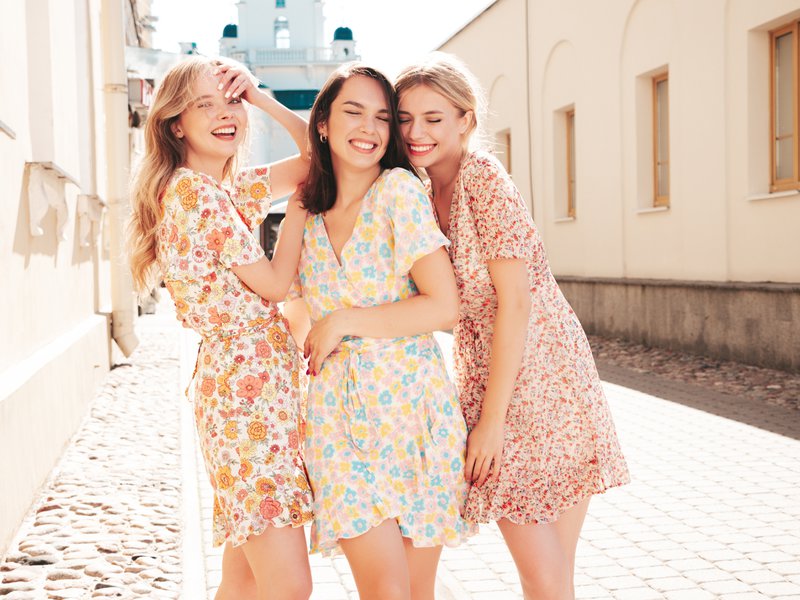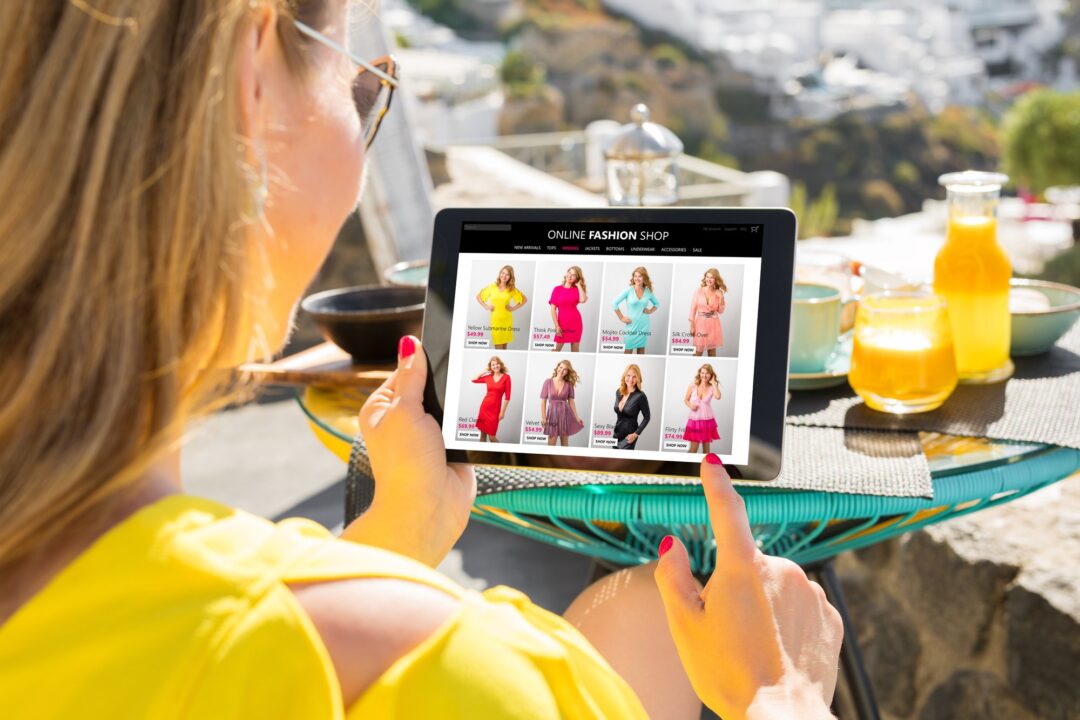Lifestyle brands are just as much about projecting an image as they are about the product itself. So, instead of selling a product to a customer, brands now offer a lifestyle that makes the customer want their product. Just consider this: the global lifestyle market—estimated at $6.78 billion in 2022—is expected to hit $10.6 billion by 2027. If things go according to plan, that’s a healthy 9.04% annual growth rate.
What Are Lifestyle Brands?
Welcome to the world of lifestyle brands, where people aspire to a specific way of living via the products and services they purchase. Lifestyle brands also sell aspirational stories that tap into their customers’ desire to be part of that particular community. This is based on the observation that individuals connect with those brands that reflect the lifestyle they aim to achieve.

We buy basketball shoes worn by our favorite NBA players so we can tap into their exploits when we play pickup games. The clothing we wear is often influenced by the celebrities we admire and follow on social media. Our choice of watches, cars, and sunglasses also forms part of the kind of life we want. Whether we’re in search of a sporty, adventurous, glamorous, luxurious, or cool lifestyle, the brands we wear tell the story for us.
But how does a lifestyle brand manage to do all this? The key is to maintain a deep connection between the brand and their followers—and this means understanding everything about them. Brands meticulously perform research on their captive target audiences. They examine the market’s collective hopes, dreams, and frustrations. Once they understand the customer’s innermost wishes, they develop a marketing campaigns that connects to these goals.
Jordan Brand: A Shining Example of a Lifestyle Brand
Jordan Brand is a shoe and apparel collection that reflects the glorified lifestyle of basketball legend Michael Jordan. Twenty years after the NBA legend’s retirement, his name brand continues to serve a market hungry for both performance and lifestyle products. Parent company Nike also offers shoes, clothing, and other kit from current NBA superstars such as LeBron James and Kevin Durant. However, Jordans singlehandedly outsell them all and remains Nike’s biggest brand. In 2022, Jordan earned $5.8 billion in revenue, which meant a hefty $290 million payday for His Airness.
What makes the Jordan brand special compared with other basketball shoe brands? During his 15-year career, Michael Jordan epitomized basketball greatness by winning six NBA championships, two Olympic medals, and nearly every other award out there. Fans all over the world bought his signature shoes so they could “be like Mike.” Outside of basketball, Jordans also became associated with hip urban lifestyle clothing. Their popularity reached the point where men wore Jordans with tuxedos to formal events.
The Right Moves
In the transformation process from simply a basketball product to one of the most popular lifestyle brands, the Jordan brand made all the right moves. MJ captured the attention of an audience looking for the next big thing: great basketball player + attractive shoes = must-buy item. In a market flooded with drab footwear and bland designs, Jordans provided a flashy and fashionable alternative. No wonder they were a hit with buyers looking to upscale their lifestyles. As a result, even those who didn’t play basketball wore Jordans to show their competitive, winning mindset.

Transforming Businesses Into Lifestyle Brands
Sometimes, circumstances dictate a shift in direction for your brand. Perhaps you’re dealing with a crowded marketplace—or even changing consumer habits. No matter the reason, pivoting to a lifestyle brand needs careful planning and precise execution. That said, you don’t have to overhaul your product line to fit the lifestyle. Instead, let the lifestyle change happen gradually. Your audience will also take some time to get used to the shift in focus.
Let’s look at the basic steps for achieving that lifestyle brand metamorphosis:
Build a Knowledge of Your Customer Base
Before launching your lifestyle campaign, take some time to dive deeper into your customer base. Scrutinize your market’s demographics, purchasing practices, and needs. Knowing exactly what your customer wants can help you better align the lifestyle you’re selling with their requirements.
Central to this research is finding the common lifestyle thread among your audience. What specific problems do they have, and how do your products solve these issues? For example, say you’d like to pivot your clothing company to revolve around a niche sport like skateboarding. To design items like shirts or shorts, you’ll need an understanding of fit, comfort, and performance requirements specific to skaters. If you already have a line of clothing that’s popular among this group, then look into expanding that offering.
Create a Lifestyle Around Your Products
Once you understand your audience, you’re ready to create a complementary lifestyle that features your products. If backpackers are your main customers, feature them prominently in your marketing campaigns. Tell stories about how lightening their burdens (literally) can expand their horizons.
Creating a lifestyle also means knowing how and where to tell your story. Develop a brand voice that’s a good fit for your market. Here, consider placing content on community sites and social pages frequented by your audience. Additionally, when partnering with industry leaders, choose the right lifestyle entities and collaborators to work with.
Smart Merchandiser is launching a new feature called “Leading Image” which allows merchandisers to select alternative images
Storytelling as a Part of Merchandising
Let the story of your brand unfold as part of your merchandising efforts, using the same brand voice and direction. Visuals are an excellent way to reinforce your chosen lifestyle. However, rather than just displaying product shots, showcase your products in action to highlight the lifestyle setting.
To illustrate, have a group of like-minded individuals taking an exercise break while they chat and enjoy your energy drink. Or, demonstrate the durability of your quality kitchen tool with images of it being passed from mother to son or daughter while cooking a Thanksgiving meal together. These positive images turn the spotlight on your products as well as the lifestyles and values they’re associated with.

Underscoring Brand Values That Match Your Customers
When merchandising your products and finalizing the content, check that brand attributes remain in sync with lifestyle identity. For example, promoting heavy-duty or durable equipment won’t need product descriptors that appeal to non-lifestyle customers.
Similarly, products made for a rugged, adventurous lifestyle won’t jibe with descriptors like “serene” or “relaxed.” Instead, try using language that appeals to the senses and adds lifestyle value—for instance, “adventure of a lifetime” or “face your fears.” Delivering a well-balanced message requires complete knowledge of your products—plus a keen understanding of what your audiences find appealing.
Personalizing the Buyer Experience
Lastly, add more personalization to the buyer experience by curating your product offerings, bundles, and promos to align with the chosen lifestyle theme. Cross-sell or upsell products that are used in similar activities, such as work, sports, or relaxation.
For example, product bundles that include mood candles and meditation music are great when you’re upselling yoga mats to followers of a mindfulness lifestyle. Similarly, offer your foodie and fine dining lifestyle followers free custom monograms with new cooking equipment or upgrades to their existing appliances. Just make sure to align these recommendations with a customer’s purchase history. Otherwise, you’ll end up as more background noise.
Lifestyle Brands Need Smart Merchandiser
Managing and maintaining lifestyle brands requires a lot of work. However, you don’t have to manage the entire task single-handedly. Smart Merchandiser takes care of your online store merchandising needs—and a lot more efficiently than your basic spreadsheets or inventory management software.
Their dynamic catalog system automatically changes product displays based on the rules you set. Whether your eCommerce offering is organized by available stock, season, or what’s trending, Smart Merchandiser will have your site catalog updated and running in no time. The result? Brands using Smart Merchandiser can expect a 70% increase in productivity and a 20% boost in site revenue.
Find out more about how Smart Merchandiser can help boost your online storefront activity. Contact us for a free consultation and we’ll be happy to arrange a demonstration as well.




